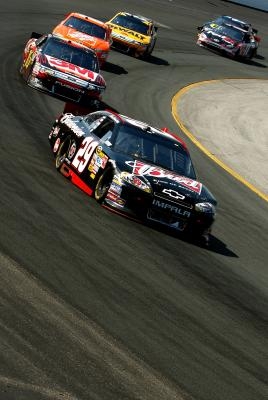
Wheel bearings are some of the most important and least regarded parts of your vehicle's drivetrain. When they start to malfunction, wheel bearings typically emit a signature grinding or whining sound, possibly severe enough to feel through the floorboard or steering wheel. Bearing noise is a harbinger of very bad things, which makes locating it as soon as possible a possibly life-or-death affair. Fortunately, troubleshooting the source of the grumble is as simple as listening while you transfer your car's weight from corner to corner.
Locate a large, empty parking lot where you can drive your car at up to about 45 mph. Drive your car to one end of the parking lot, turn around and accelerate up to about 45 mph.
Stab your brakes as though you were coming to a panic stop. The front of the car will nose-dive, transferring weight to the front and putting more pressure on the bearings. Listen for a change in bearing noise; if it gets louder, then you have a bad front bearing. If it gets quieter or disappears, then you have a bad rear bearing.
Drive your car around in an approximately 200-foot diameter circle at about 45 mph. Start with a clockwise rotation; this will transfer your car's weight to the driver's side of the car. If the bearing noise gets louder, the bad bearing is on the driver's side. Repeat in a counter-clockwise direction. If the bearing noise gets louder, the bad bearing is on the passenger's side.
Correlate your findings. If you have found that bearing noise or vibration increased while breaking and circling counter-clockwise, then the bad bearing is on the front-passenger's side. If the bearing noise decreased under braking and increased when circling clockwise, then the bad bearing is on the rear-driver's side.